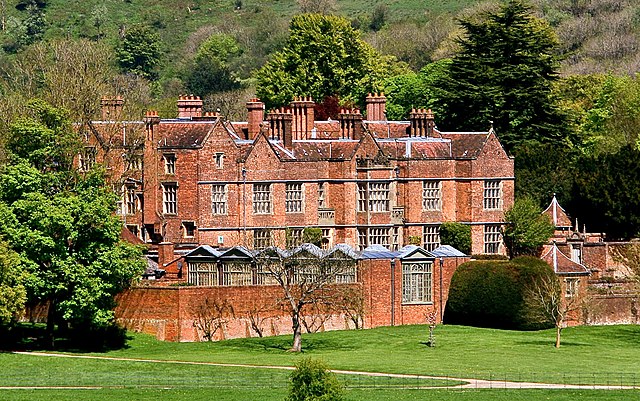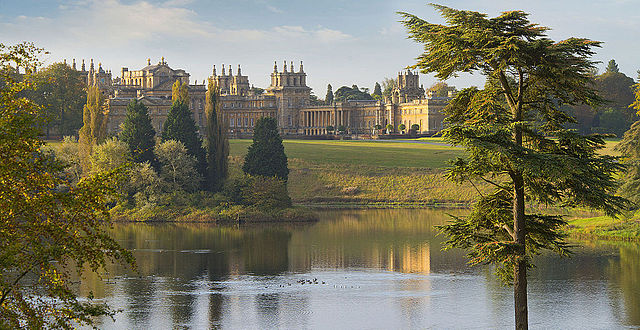Chequers is the country house of the Prime Minister of the United Kingdom. A 16th-century manor house in origin, it is near the village of Ellesborough, halfway between Princes Risborough and Wendover in Buckinghamshire, at the foot of the Chiltern Hills, 40 miles (64 km) north-west of central London. Coombe Hill is two-thirds of a mile (1.1 km) northeast. Chequers has been the country home of the serving Prime Minister since 1921 after the estate was given to the nation by Sir Arthur Lee by a Deed of Settlement, given full effect in the Chequers Estate Act 1917. The house is listed Grade I on the National Heritage List for England.
Chequers – the official country residence of British Prime Ministers since 1921
Rear view of Chequers in 2006
Chequers from the Ridgeway with Coombe Hill behind it
Queen Elizabeth II and Edward Heath with Richard and Pat Nixon, 1970
An English country house is a large house or mansion in the English countryside. Such houses were often owned by individuals who also owned a town house. This allowed them to spend time in the country and in the city—hence, for these people, the term distinguished between town and country. However, the term also encompasses houses that were, and often still are, the full-time residence for the landed gentry who dominated rural Britain until the Reform Act 1832. Frequently, the formal business of the counties was transacted in these country houses, having functional antecedents in manor houses.
Belton House is an English country house in Lincolnshire
In the 20th century Longleat House was the first country house to open to the paying public, and also claims the first safari park outside Africa.
Blenheim Palace
Forde Abbey in Dorset. Many country houses have evolved and been extended over several centuries. Here, the architecture runs from Medieval ecclesiastical to Palladian and on to Strawberry Hill Gothic, while at sometime an attempt at unity has been made by the use of crenelation.








